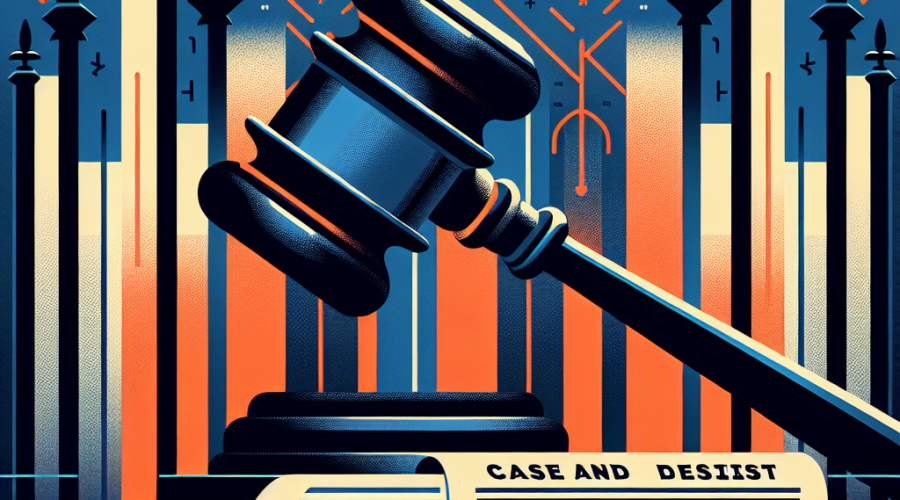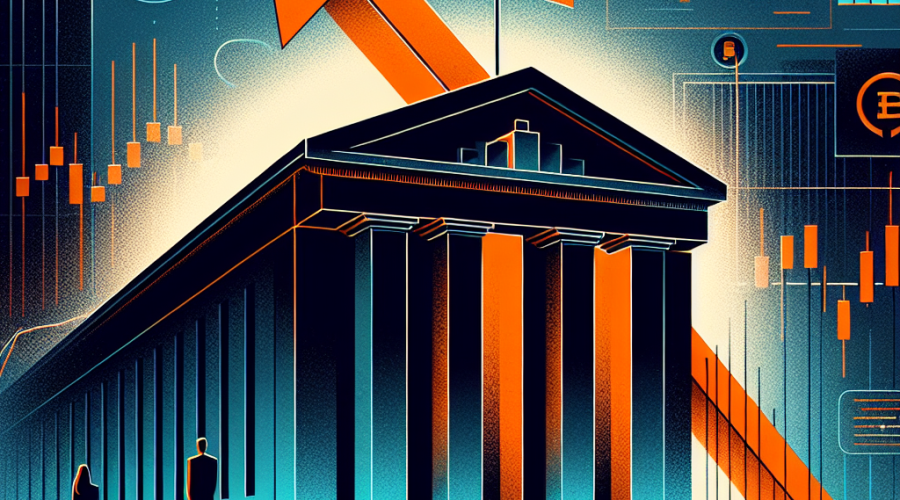U.S. Lawmaker Introduces Bill to Allow Cryptocurrency in 401(k) Retirement Accounts
Introduction to the New Crypto 401(k) Legislation
In a move that could redefine how Americans manage retirement savings, U.S. Representative Troy Downing, a Republican from Montana, has introduced groundbreaking legislation to the House of Representatives. This bill seeks to make President Donald Trump’s pro-cryptocurrency executive order—issued in 2025 and allowing crypto investments in 401(k) retirement accounts—a permanent part of U.S. law. If successful, this legislative effort could provide millions of retirement savers with the legal foundation to diversify their portfolios by including digital assets such as Bitcoin and Ethereum alongside traditional investments.
The Vision: Crypto as a Mainstream Retirement Investment
Cryptocurrencies have rapidly matured over the last decade, steadily moving from niche investment vehicles to globally recognized financial assets. Allowing the inclusion of crypto in 401(k) plans signals growing institutional acceptance and recognition of digital assets in mainstream finance. At stake is the $9.3 trillion 401(k) market, a segment that, up until now, has been largely out of reach for the crypto industry due to regulatory ambiguities and administrative hesitancy.
By integrating digital assets into the nation’s primary retirement savings plans, the legislation leverages crypto’s fundamental attributes—decentralization, transparency, and long-term growth potential—to cater to a new generation of American investors demanding diverse asset classes for their portfolios. For many, this could be the gateway into crypto markets, providing both exposure to potential growth and robust oversight previously reserved for institutional players.
Downing Champions Institutional Crypto Access
At the heart of this legislative initiative lies Representative Troy Downing’s vision for financial equality and modernization. Downing’s proposal seeks to convert a presidential executive order into lasting statute, thereby forcing uniform implementation and preventing future policy reversals. According to Downing, the objective is to broaden access to alternative investments and foster innovation within retirement savings, making sophisticated financial tools available to everyday Americans.
“Alternative investments hold the transformative potential to supercharge the financial security of countless Americans saving for retirement. I applaud President Trump for his leadership to democratize finance and am proud to be leading the effort in Congress to codify his executive order,” said Rep. Troy Downing.
This move also calls upon the U.S. Department of Labor (DOL) to review existing retirement plan guidance. The aim is to clarify and modernize compliance frameworks so 401(k) administrators and plan sponsors feel confident listing cryptocurrencies as accepted allocations for participants.
The Department of Labor’s Role and Regulatory Challenges
A pivotal aspect of the bill lies in how the Department of Labor approaches implementation. Historically, the DOL and other federal regulators have taken a cautious stance towards unconventional assets in retirement portfolios. Recent years have seen the DOL issue guidance and warnings to plan sponsors regarding the volatility, technological complexity, and security risks associated with cryptocurrencies.
Downing’s bill not only seeks to legitimize crypto in retirement savings but also requires the DOL to proactively update guidance. By mandating comprehensive reviews and clarifications, lawmakers hope to ensure investor protections and transparency. The process may include setting standards around custody, valuation, and disclosure—each of which will be crucial for winning over both plans sponsors and skeptical regulators. While this involves long timelines and deliberative rule-making, the potential rewards include mainstream adoption of crypto retirement products.
Potential Impact on Crypto Markets and Traditional Finance
Should the bill pass, the implications for the crypto industry are vast. A wave of institutional demand for digital assets could be unleashed, shifting market dynamics and potentially drawing trillions in new capital into cryptocurrencies. Analysts predict that even conservative portfolio allocations of 1-2% to crypto across America’s 401(k) plans could drive sustained buying pressure for blue-chip tokens like Bitcoin and Ethereum.
The move is also likely to stimulate innovation among plan providers and asset managers, leading to new products such as diversified crypto indexes, dynamic portfolio strategies, and crypto retirement ETFs—each tailored to different risk appetites and investor profiles. Moreover, broader ownership could enhance market stability, liquidity, and regulatory oversight, all key factors in maturing the crypto ecosystem.
On the flip side, some cautions remain. The inclusion of volatile, emerging assets in retirement accounts raises questions about suitability and investor education. Consumer advocates stress the importance of clear communication around risks, the necessity for sound financial advice, and safeguards to prevent excessive exposure to any single asset class, especially one as nascent as crypto.
Historical Context: Regulatory Shifts and Asset Diversification
Downing’s bill is not the first legislative move aiming to expand permitted retirement account holdings. Over the decades, U.S. lawmakers have gradually expanded 401(k) investment options beyond conservative fixed income and blue-chip stocks. Acceptance of alternative assets—such as real estate, private equity, and commodities—has followed broader market trends.
Previous regulatory and executive actions have paved the way for incremental financial innovation within retirement planning. Often, these have faced resistance from incumbent financial institutions and cautious regulators wary of systemic risk. However, as seen with the gradual acceptance of mutual funds, index funds, and target-date portfolios, patient regulation balanced with innovation has often led to improved participant outcomes and greater financial literacy.
Similarly, crypto inclusion echoes the arc of other disruptive technologies—from online banking to robo-advisors—eventually moving from fringe to mainstream. Regulatory clarity, responsible stewardship, and robust investor protection will be essential for successfully integrating digital assets into America’s retirement system.
Crypto Industry and Political Reception
The unveiling of crypto IRA and 401(k) options has elicited considerable enthusiasm from the blockchain industry. Professional asset managers and fintech platforms see the prospect of federal recognition as a legitimizing force, likely to accelerate new product launches, partnerships, and financial education campaigns.
Political reception, however, is more nuanced. While many Republicans, channeling free market ideals, support expanded consumer choice, some Democrats and bipartisan regulators emphasize the need for prudent safeguards and worry about exacerbating investor risk, especially among retirement savers with limited financial competence. These tensions will shape upcoming congressional hearings, markups, and media debates as the bill makes its way through the legislative process.
Meanwhile, American savers appear increasingly open to crypto exposure, especially younger demographics accustomed to digital platforms and decentralized technologies. As traditional institutions such as Fidelity and Charles Schwab introduce crypto-related offerings, momentum appears to be shifting towards broader acceptance.
Implications for Retirement Savers
For individual savers, the legalization of crypto in 401(k) accounts represents both opportunity and responsibility. On one hand, they gain access to one of the most dynamic asset classes of the last decade, with substantial upside potential and diversification benefits. On the other, they must contend with crypto’s notorious price swings, evolving regulatory frameworks, and cybersecurity risks.
Financial experts underscore the need for balance—suggesting small allocations for most investors, coupled with in-depth education and regular portfolio reviews. Sophisticated controls, such as cap limits and automatic rebalancing, may be deployed to mitigate excessive risk and volatility.
Given these complexities, lawmakers are expected to require plan sponsors to develop streamlined guidance, transparency in fee structures, and mechanisms for ongoing participant education. Retirement advisors will play a crucial role in translating regulatory updates and market dynamics into tailored asset allocations for savers of all experience levels.
Broader Economic and Political Consequences
The passage of Downing’s bill would mark a significant turning point in America’s evolving digital finance landscape. Beyond financial markets, it signals a philosophical embrace of financial innovation, entrepreneurial risk-taking, and technological adaptation in the country’s retirement system.
Furthermore, as global competition in digital currencies and blockchain intensifies, the U.S. stands to either lead by forging a regulated path for digital assets or risk falling behind jurisdictions with more agile policy-making. The successful integration of crypto into mainstream retirement accounts would reinforce America’s role as a global financial innovator—sending a strong message to both international markets and domestic investors.
Conclusion: The Road Ahead
While numerous hurdles remain before cryptocurrencies become a routine fixture in 401(k) plans, Representative Downing’s bill has ignited a critical discussion about the future of retirement savings in the digital era. As Congress debates the details, the stakes for both investors and the broader financial industry are substantial. The outcome will likely set the tone for crypto’s role in long-term wealth building and establish a precedent for future policy decisions in the ever-evolving intersection of finance and technology.
For now, industry participants, regulators, and retirement savers alike are watching developments closely, poised for what could be a historic shift in America’s approach to financial planning and wealth preservation.
Disclaimer: The above information is for informational purposes only and should not be construed as financial or investment advice. Cryptocurrency markets are volatile, and investing in digital assets involves risk. Individuals are urged to conduct their own independent research and consult a licensed financial advisor before making any investment decisions.


















